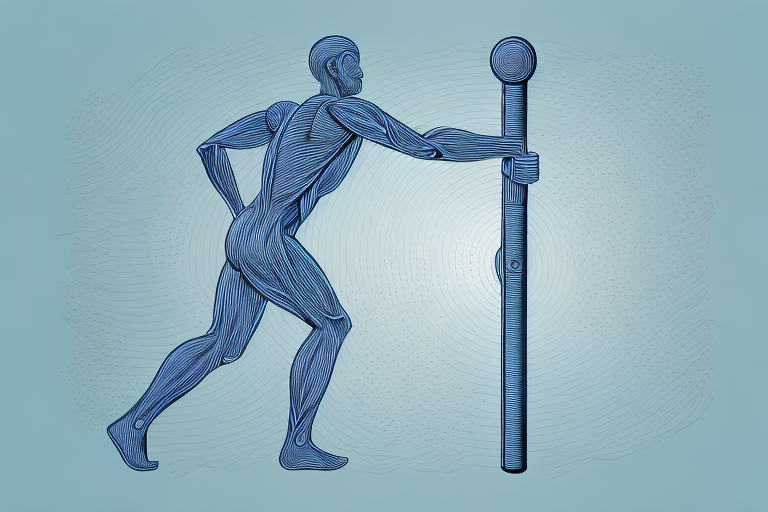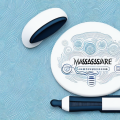If you’re an athlete or fitness enthusiast, you know the importance of taking care of your muscles. This is where the stick muscle roller comes in. In this article, we will give you a comprehensive guide on how to use the stick muscle roller for maximum results. From understanding the science behind muscle rolling to different techniques for targeting different muscle groups, we’ve got it all covered.
Introduction to the Stick Muscle Roller and Its Benefits
The stick muscle roller, also known as the stick roller, is a handheld massaging tool that is designed to help relieve muscle tension, reduce soreness, and improve flexibility. It features a stick-like shape with rollers that help apply pressure to your muscles, making it an effective way to improve your overall recovery process. Whether you’re a professional athlete or a fitness enthusiast, the stick muscle roller can help you achieve maximum results by speeding up your muscle recovery process.
Using a stick muscle roller can also help prevent injuries by increasing blood flow to your muscles and reducing the risk of muscle strains and tears. It can also be used as a warm-up tool before a workout to help prepare your muscles for exercise. Additionally, the stick muscle roller is portable and easy to use, making it a convenient option for those who want to incorporate muscle recovery into their daily routine. Overall, the stick muscle roller is a versatile and effective tool for anyone looking to improve their muscle health and performance.
Understanding the Science Behind Muscle Rolling
Before jumping into the techniques and benefits, it’s essential to understand the science behind muscle rolling. When you perform intense physical activity, your muscle fibers accumulate tiny tears, causing soreness and inflammation. Muscle rolling helps to break down muscular knots, improve blood circulation, and relieve muscle pain through the application of pressure to specific muscle groups. It’s a great way to speed up your recovery process by allowing oxygen and nutrients to reach the affected muscles, reducing recovery time and improving performance.
Additionally, muscle rolling can also help to improve flexibility and range of motion. By breaking down adhesions and scar tissue, muscle rolling can help to increase the elasticity of your muscles, allowing you to move more freely and with less pain. It’s important to note that muscle rolling should not be used as a substitute for proper warm-up and cool-down exercises, but rather as a complementary technique to enhance your overall fitness routine.
Preparing Yourself and Your Muscles for a Successful Roll
Proper preparation is key to achieving maximum results when using your stick muscle roller. Before rolling, it’s important to stretch your muscles, hydrate yourself, and find a comfortable spot to perform your rolling routine. Once you’re ready, choose the stick muscle roller that best fits your needs and begin by applying gentle pressure to the targeted muscle group. It’s essential to start slow and increase pressure gradually to avoid causing further muscle damage.
In addition to stretching and hydrating, it’s also important to warm up your muscles before using the stick muscle roller. This can be done through light cardio exercises or dynamic stretching. Warming up helps to increase blood flow to the muscles, making them more pliable and less prone to injury during the rolling process. Remember to also breathe deeply and relax your muscles as you roll, allowing the stick to work its magic and release any tension or knots.
Step-by-Step Instructions for Using the Stick Muscle Roller
When using the stick muscle roller, it’s important to follow the right technique to achieve maximum results. Begin by placing the roller on the targeted muscle group and apply gentle pressure while rolling back and forth. Roll in different directions for about 2-3 minutes, applying more pressure to areas that feel tight. If you experience pain or discomfort, decrease the pressure or stop rolling and consult a physician if necessary.
It’s also important to note that the stick muscle roller should not be used on bony areas or directly on joints. It’s best to use it on larger muscle groups such as the quads, hamstrings, and calves. Additionally, it’s recommended to use the roller after a workout or physical activity, as it can help with muscle recovery and reduce soreness. Remember to clean the roller after each use to prevent the buildup of bacteria and prolong its lifespan.
Different Techniques for Targeting Different Muscle Groups
The stick muscle roller can be used to target different muscle groups in your body, depending on your needs. You can use it to roll your feet, calves, hamstrings, quads, IT band, and even your back. Each muscle group requires a different rolling technique, so it’s important to research and understand the proper technique to achieve maximum results.
For example, when rolling your calves, you should start at the ankle and roll up towards the knee, applying moderate pressure. When rolling your hamstrings, you should sit on the roller with your legs straight out in front of you and roll from the back of your knee to your glutes. Rolling your IT band can be particularly painful, but it’s important to target this area to prevent knee pain. To do so, lie on your side with the roller under your hip and roll from your hip to your knee. Understanding the proper technique for each muscle group will not only help you achieve maximum results, but also prevent injury.
Common Mistakes to Avoid While Using the Stick Muscle Roller
Using the stick muscle roller incorrectly can cause more harm than good. Common mistakes to avoid include rolling too fast, rolling on the wrong muscle groups, applying too much pressure, and using the device for too long. It’s important to keep your rolling sessions short and sweet, giving your muscles time to recover between sessions.
How Often Should You Use the Stick Muscle Roller?
The frequency of using the stick muscle roller is dependent on your training schedule and personal needs. For athletes who train regularly, daily rolling is recommended. For fitness enthusiasts who work out less frequently, rolling 2-3 times a week can suffice. It’s important to listen to your body and adjust your rolling frequency accordingly.
Maximizing Your Results: Combining Stick Muscle Rolling with Other Recovery Techniques
The stick muscle roller works best as part of a comprehensive recovery program. You can combine it with other techniques such as stretching, ice baths, and yoga to achieve maximum results. Regular foam rolling can also help improve your overall flexibility and mobility, making your muscles more resistant to injuries in the long run.
Tips for Choosing the Right Stick Muscle Roller for Your Needs
When choosing the right stick muscle roller for your needs, consider the texture, shape, size, and durability of the roller. You can choose between smooth rollers and those with protruding knobs for different levels of pressure. Consider the size of the roller, too, as larger rollers are better for rolling larger muscle groups. Lastly, invest in a durable stick roller, as the last thing you want is for your device to break down mid-roll.
In conclusion, the stick muscle roller is a great investment for anyone looking to improve their muscle recovery process. However, it’s crucial to use it properly and follow the right technique for maximum results. Keep in mind the different techniques for targeting different muscle groups, and remember to combine rolling with other recovery techniques to achieve the best results. Happy rolling!





